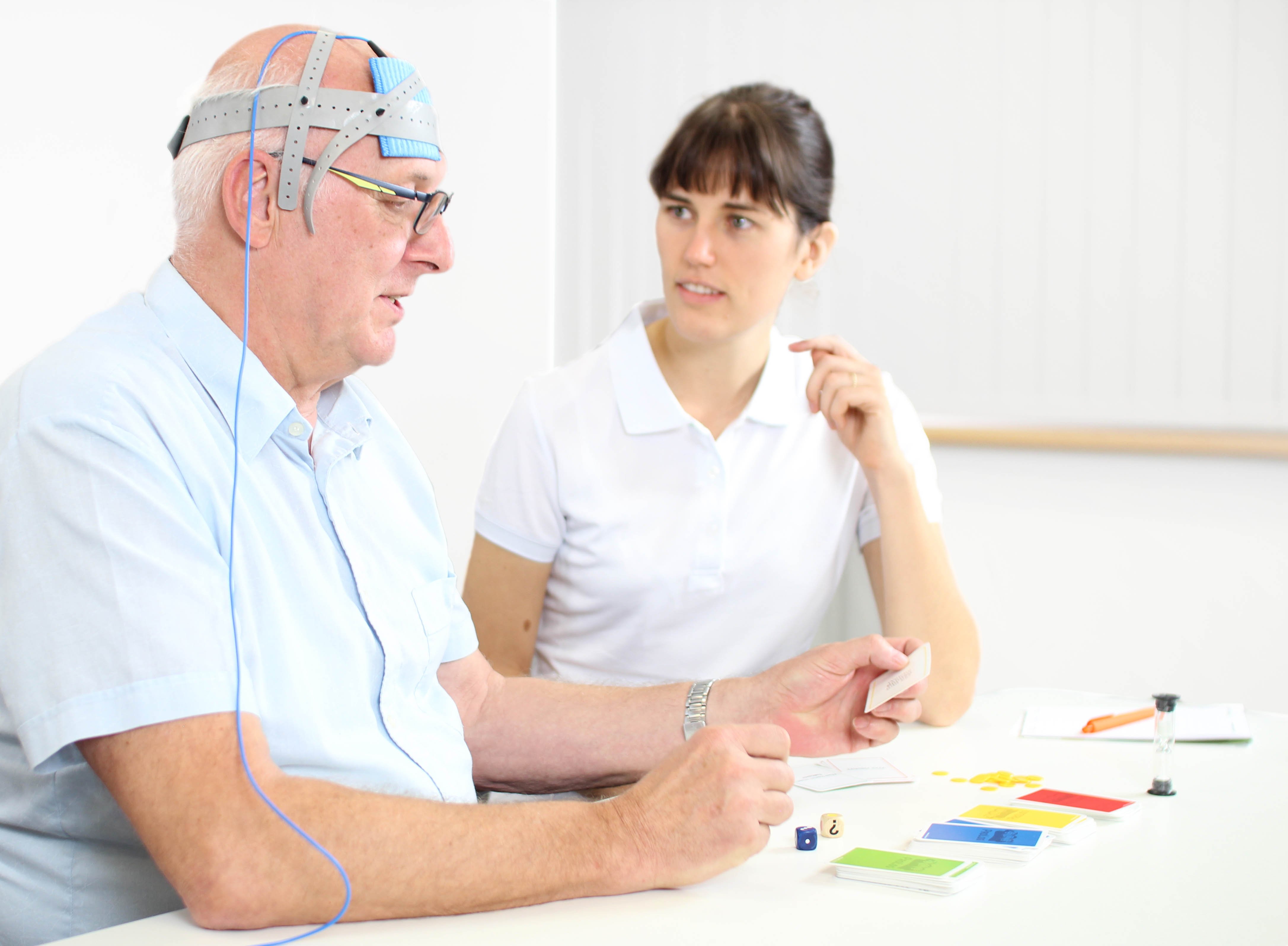tDCS for Addiction / Addictive Disorders
Learn more about the use of tDCS in treating Addiction / Addictive Disorders, how it works and the scientific evidence behind it.
.jpg?width=1480&height=500&name=Addiction_tDCS%20(1).jpg)
Straight to:
Addiction, also known as addictive disorders or Substance Use Disorders (SUDs), is a complex and chronic condition characterized by compulsive engagement in activities or consumption of substances despite negative consequences. It affects the brain's reward system, leading to an intense craving for the addictive substance or behavior. SUDs encompass a range of substances, such as alcohol, drugs, or prescription medications. Individuals suffering from addiction often find it challenging to control their impulses, resulting in harmful effects on their physical, mental, and social well-being. Treatment for addiction involves a combination of behavioral therapies, support groups, and, in severe cases, medical interventions to manage withdrawal symptoms and promote recovery.
Substance use disorders (SUDs) are a significant global health concern, and while there are various treatments available, they may not work for everyone. Recent research has explored the use of non-invasive brain stimulation techniques like Repetitive Transcranial Magnetic Stimulation (rTMS), Transcranial Direct Current Stimulation (tDCS), and Deep Brain Stimulation (DBS) as potential therapies for SUDs.
What is tDCS?
Transcranial Direct Current Stimulation (tDCS) is a non-invasive, well-tolerated neurostimulation treatment. In practice, tDCS involves attaching an anode and cathode electrode to the head producing a weak electrical current that is applied to the brain. Several studies have shown positive effects on a range of conditions. tDCS equipment is easy to use, and the treatment is painless and safe. When combined with other therapies, tDCS can enhance their positive effects. Depending on the voltage, duration, polarity, and location of the electrodes, the applied current has an inhibiting or stimulating effect. tDCS modifies the resting membrane potential, either promoting or inhibiting the transmission of information. This allows the therapist to modulate neuronal excitability and activity levels.

Why tDCS for Addiction?

Treating addictive disorders presents significant challenges, as individuals with addiction often struggle with impaired cognitive control concerning cravings and substance consumption. Research indicates that these difficulties in cognitive control are associated with altered activity in a brain region called the Dorso-Lateral Prefrontal Cortex (DLPFC). Promisingly, stimulating the DLPFC through tDCS has shown potential in alleviating risk-taking behaviors and addressing addiction-related issues. As a result, tDCS may hold the possibility of reducing cravings for addictive substances. However, it is important to approach these findings with caution, as further research is needed to establish the full extent of tDCS's efficacy in addiction treatment and its potential impact on cravings and cognitive control.
Studies that looked in to tDCS for the treatment of addiction, conducted an average of 5 – 10 sessions, with a duration of 20 – 30 minutes per session.
Is tDCS for Addiction scientifically proven?
tDCS for Addiction is considered to have “Level B” evidence, which is considered to be “probably effective”. This level includes evidence from well-conducted clinical trials without randomization, case-control studies, or cohort studies. While not as strong as Level A evidence, Level B still provides moderate support for the therapy's effectiveness.
In this study by Coles et al. (2018) researchers reviewed 60 studies conducted between 2000 and 2017 that examined the effects of rTMS, tDCS, or DBS on cravings and consumption of different substances like tobacco, alcohol, cannabis, opioids, and stimulants.
The results showed that both rTMS and tDCS were associated with reduced drug cravings and consumption. Early studies on DBS also showed promising results. The most encouraging outcomes were observed when stimulating a specific brain region called the Dorsolateral Prefrontal Cortex (DLPFC).
However, more research is needed to fully understand the potential of these non-invasive brain stimulation techniques for SUD treatment. While short-term treatment with rTMS and tDCS showed positive effects, further studies should explore how to extend these therapeutic benefits by adjusting the stimulation frequency and treatment duration.
Overall, the use of rTMS, tDCS, and DBS for SUD treatment requires more investigation using rigorous randomized and controlled studies to determine their effectiveness and potential as prevention strategies.
In another study by Batista et al. (2015), researchers investigated the effects of a non-invasive brain stimulation technique called transcranial direct current stimulation (tDCS) on crack-cocaine addiction. The trial involved 17 male crack-cocaine users who received active tDCS and 19 males who received a placebo (sham) treatment.
The results showed that the group receiving active tDCS experienced a significant reduction in craving for crack-cocaine compared to the placebo group. Anxiety levels decreased in the active tDCS group but increased in the placebo group. Additionally, the perception of overall quality of life and health improved in the active tDCS group, while it decreased in the placebo group.
The researchers concluded that repetitive bilateral tDCS over a specific brain area called the dorsolateral prefrontal cortex reduced craving for crack-cocaine, decreased anxiety, and improved quality of life. They believe that tDCS may enhance prefrontal brain functions related to regulating craving behavior.
Overall, these findings suggest that tDCS holds promise as a potential treatment for drug addiction and may help individuals struggling with crack-cocaine dependence to manage cravings and improve their overall well-being. However, further research is needed to confirm and better understand the effects of tDCS on addiction treatment.
Scientific articles on tDCS for Addiction
Disclaimer
The information on this page is general in nature and is not intended to be a substitute for professional medical advice. Please speak with your doctor about your options for treatment.
tDCS Online Course
If you are a healthcare professional interested in learning more about tDCS, start with neurocare's online course on the LMS.
tDCS Devices & Accessories
*For Healthcare Professionals and Researchers Only.* Explore the neuroConn DC-STIMULATOR product range for clinical practice and research.
Find a clinic
Seek innovative and personalized treatment at a clinic near you
I'm a clinician
Learn more about our platform, innovative technologies and training academy for health professionals and researchers.
I'm an investor
Learn more about our vision and plans for growth and access our Investor Room.
Stay up to date with the neurocare platform and our network of clinics
Stay up to date with our platform and clinics
Copyright © neurocare group AG 2025





